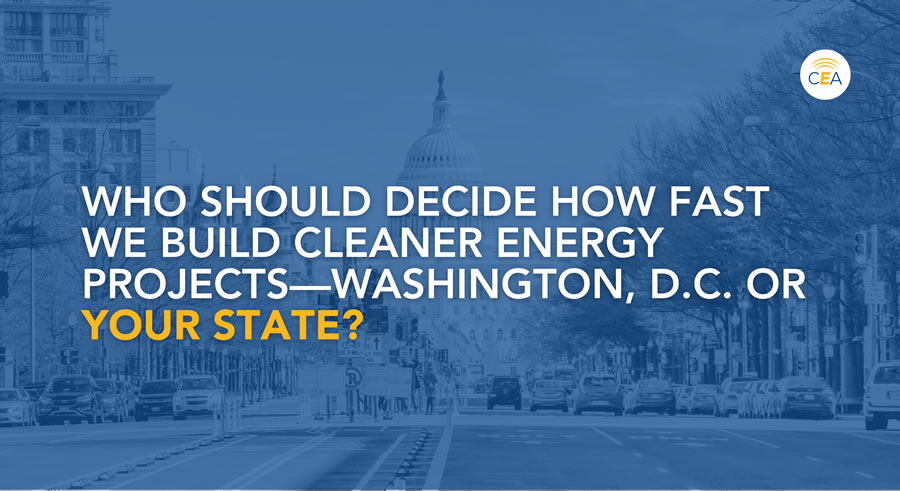When it comes to energy and environmental policy, most people think of pipelines, wind farms, or electric bills—not the bureaucratic processes that determine whether smart energy projects get built in the first place. But the speed and success of those projects often hinges on something called primacy—a legal authority that determines who calls the shots when it comes to certain types of underground infrastructure.
So, What is Primacy?
In the world of environmental regulation, primacy refers specifically to a state’s authority—granted by the federal government—to oversee the Underground Injection Control (UIC) program under the Safe Drinking Water Act. This program governs Class I through Class VI wells, which are used for everything from disposing of wastewater to storing carbon dioxide deep underground.
Primacy doesn’t cover all environmental permits. States already manage most permitting for air and water quality. But for certain specialized well types—especially Class VI wells, which are used for Carbon Capture and Storage (CCS)—primacy is a game-changer. It allows states, rather than the federal Environmental Protection Agency (EPA), to oversee the permitting process.
That might sound like inside baseball—but it can have a real impact on how quickly energy projects move forward.
Why It Matters to Families and Businesses
Delays in permitting don’t just frustrate developers—they can delay the benefits of lower emissions, stronger energy systems, and job creation. When federal agencies take months—or even years—to approve permits, it slows progress across the board. And that lag time eventually filters down into higher costs for consumers, whether it’s on your electricity bill or at the gas pump.
States that have primacy can process applications more efficiently. They know their own geology, industry needs, and environmental context. And they’re accountable to local voters—not a distant federal agency. That means faster decisions and fewer bureaucratic hurdles, especially when it comes to deploying new technologies that can support cleaner energy and economic growth.
Beyond reliability and emissions, there’s another reason CCS matters.
Industrial facilities—like refineries, fertilizer plants, chemical manufacturers, and steel mills—are under pressure from new federal and state emissions rules, as well as their own corporate emissions reduction commitments. Many must adopt technologies like CCS just to stay in business.
These facilities aren’t abstract—they produce the fuel, food, medicine, plastics, and everyday materials we rely on. That includes:
- Gasoline and diesel for transportation
- Fertilizer that supports American farmers and our food supplies
- Chemical components for medications, packaging, and hospital supplies
- Synthetic materials for shoes, phones, clothing, electronics, and even makeup
If CCS permitting remains slow or uncertain, these facilities may be forced to scale back, close, or move operations overseas. That would mean higher prices, more imported goods, job losses, and less energy security—with no environmental benefit if production shifts to countries with weaker standards.
Understanding Carbon Capture and Storage (CCS)
One of the most talked-about uses of Class VI wells is Carbon Capture and Storage. CCS is a process that traps carbon dioxide (CO₂) emissions before they enter the atmosphere and stores them deep underground. It’s not an energy source, and it doesn’t generate power—but it can help reduce emissions from traditional energy production and industrial manufacturing.
For example, CCS can be used at facilities like steel plants or power stations to keep emissions out of the air, helping industries meet environmental goals without needing to completely overhaul their operations.
That’s why efficient permitting matters. If we’re going to explore CCS as part of the energy mix, we need smart policies that enable projects to be reviewed quickly, safely, and at the state level—where decisions are closer to the communities they affect.
The Hold-Up: Why Isn’t This Happening Everywhere?
Some states, like Louisiana, have already been granted primacy and can now oversee Class VI well permitting themselves. That puts them ahead of the game in attracting investment and building new CCS projects. But in other states, efforts to gain primacy are stalled—sometimes due to regulatory backlogs, other times due to political opposition from groups seeking to delay energy infrastructure development altogether.
While it’s important to have strong environmental safeguards, it’s also critical to ensure that innovation isn’t buried under red tape. Local oversight doesn’t mean weaker standards—it often means more informed, efficient, and accountable decision-making.
A Smarter Path Forward
Primacy isn’t about weakening environmental protections—it’s about making them work better. Giving states the ability to oversee Class VI wells under the UIC program ensures that responsible energy innovation isn’t stalled by one-size-fits-all federal processes.
It also helps America stay competitive. As energy producers look to integrate CCS and other advanced technologies, the states that can move quickly and responsibly will benefit first—bringing jobs, investment, and environmental progress to their communities.
The Bottom Line
Permitting reform is a national conversation, but primacy is a critical piece of that puzzle—especially when it comes to deploying CCS technologies and managing underground energy infrastructure.
By empowering states to manage Class VI well permitting, we can cut delays, support state decision-making, and build a cleaner, more reliable energy future. It’s a practical step that helps ensure that environmental solutions don’t come at the cost of affordability or reliability.
And while CCS is not inexpensive or easy to deploy, primacy gives states the ability to move forward with the projects that make economic and environmental sense for their communities.

